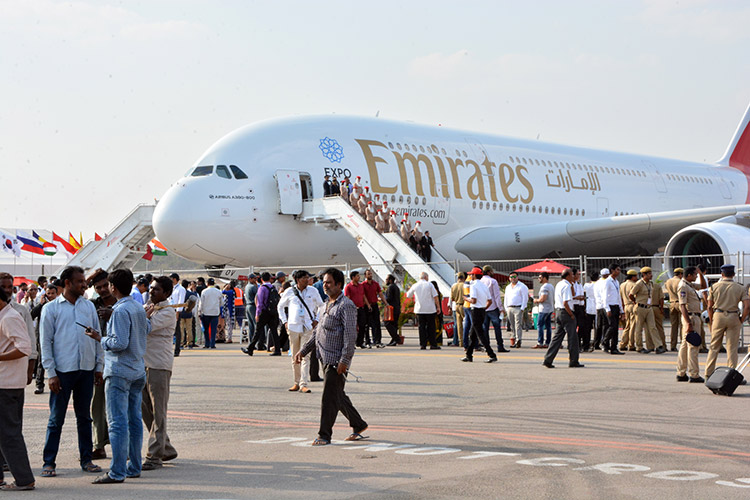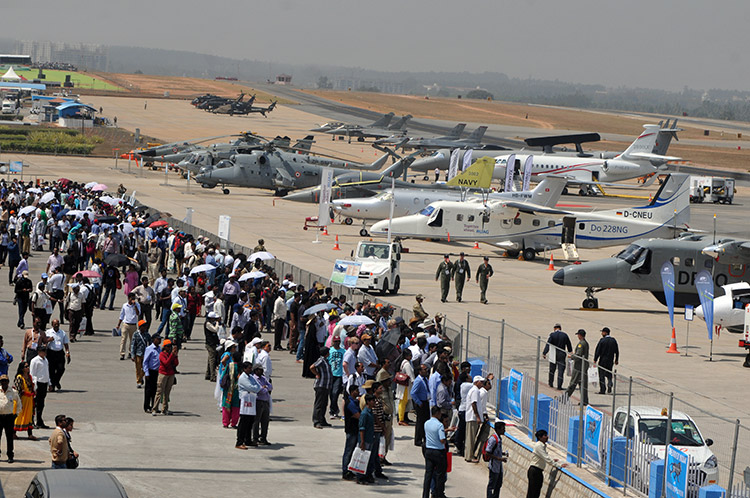A single air show speaks of the synergy in the aviation environment of a country
 AVM Manmohan Bahadur (retd)
AVM Manmohan Bahadur (retd)
Air power is the total ability of a nation to assert its will through the medium of air. It comprises primarily the assets of the air force but also includes the air arms of the other Services, state governments and the civilian passenger and cargo fleet. Any differentiation that is made, intentionally or inadvertently, results in undermining the capability of this potent instrument available to the government.
Air shows are events that are hosted by nations to showcase their industry to the world. The showcasing includes many nuances starting with the dissemination of information of the new products that are available for sale. These aviation assets are put on static display for decision makers and the lay public to view up close, and some, if not most, put up a flying display to show their prowess and special capabilities.
Key decision takers and perception makers (media included) are offered flights in the aircraft being publicised to ‘shape the environment’ — in the lead up to the Indian decision to select a fighter for the USD 12 billion (price quoted a few years back in the press) Medium Multi Role Combat Aircraft (MMRCA) requirement, all leading vendors flew IAF test pilots and some senior officers at Aero India shows while Boeing gave a well-publicised spin to leading industrialist Ratan Tata in an F-18.
Similar ‘customer sorties’ are flown in civil passenger aircraft being offered to airline companies. Armament, avionics, optronics, navigation equipment, computing devices, simulator mock-ups, modern flying helmets and other flying accessories, maintenance equipment et al are hard sold through slick presentations and other sales gimmicks. While all this is the glimmering ‘front end’ of the air show, serious technical and business discussions and hard negotiations go on in the background, as vendors and buyers alike, make use of the opportunity to cash-in on the opportunity of the presence of technical, business and managerial expertise under one roof. It is not for nothing that the disclosure of big business deals, that could have been otherwise announced earlier, are revealed to the world in the environs of an air show as the impact made is magnified many times over. In essence, the host nation, which has the home advantage, announces to the world that it not only is a serious aviation player in the field of manufacturing and R&D but also a facilitator of business tie-ups for major world manufacturers.
The government of India held the first Aero India air show in 1996. It was a combined event, like all world air shows, in which the civil and military industry took part. This continued till 2007 and leading world manufacturers, who generally manufacture both civil and military machines, participated with equipment of both the fields. In modern aviation industry, the two are closely linked, with spin-offs into each other, especially from the military to the civil. This is especially true of technology being sold and developed. The exchange of information and ideas on the vendor stalls and in business meetings, thus, is wholesome and decision makers are able to better grasp how a combination of R&D and manufacturing and purchase in the two fields (civil and military) can bring down costs, inventory and design and manufacturing time; bargains are also struck when purchases are to be made in both the fields.
The biennial Aero India has been hosted by the Indian Air Force (IAF), as the lead agency and coordinator, at Air Force Station Yelahanka near Bangalore, under the auspices of the ministry of defence (MoD). Specialised hangars (huge ones to act as display halls) have been built at large expense to the exchequer. The area surrounding the Yelahanka airbase is relatively unpopulated and sufficient airspace is available for demonstration flights. However, in 2008, the ministry of civil aviation decided to delink the civil element and host a biennial civil aviation air show, India Aviation, at Hyderabad alternating with Aero India. The background to this decision is not available, but it goes against the basic grain of hosting air shows as enumerated above.

As is well known, the two premier air shows of the world are the Farnborough air show in the UK and Le Bourget in Paris. The websites of the two point to the importance of having a single combined air show where all aspects of air power are demonstrated. Thus, at Farnborough this year, the air displays included various versions of Airbus Industries’ aircraft like A-350/380 airliners and A-400M military freighter, Boeing’s P-8 long range maritime surveillance aircraft, a vintage B-17G, the latest F-35B fighter, a flying boat Catalina PBY-5A, Apache helicopters, Eurofighter Typhoon, American F-18E and Red Arrows display team, among others. For the first time the UK Drone Show was also held alongside the Farnborough air show.
Additionally, there were symposia and seminars on aviation related topics, which are a standard fare at such events. Some 514 orders and commitments, amounting to billions of dollars, were announced at the air show. A similar line up of military and civil aircraft and products takes place at the Le Bourget, Paris air show. In fact, the highlight of the 2015 Paris air show was the near vertical take-off demonstrated by a Boeing 787, the video of which went viral on YouTube. As an indicator of the fact that companies demonstrate both civil and military products, Boeing brought their B-777ER airliner, 787-9 Dreamliner, P-8A anti-submarine warfare aircraft, F-15E fighter and the CH-47 Chinook helicopter. China’s Zhuhai air show also follows a similar pattern and so do the air shows in Singapore and West Asia – the Tejas debuted this year at the Bahrain air show.

The way an air show is hosted is an indicator of the synergy, or otherwise, in the aviation environment of a nation. Two separate air shows are indicative of a split in the interests involved – foreign OEMs and governments exploit this to India’s disadvantage. Thus, one has seen a gradual diminishing of the involvement of top-end products in the two air shows that India holds. Having one show every year (since both are biennials held in alternating years), has resulted in ‘air show fatigue’ setting in and the loss of novelty and thrill associated with such an otherwise intoxicating event; a cursory glance at the participating products will bear this out. It also boils down to a matter of economics and the costs involved in participating in an air show; companies cannot put in their best every year, as it costs them enormous amount of monies to transport equipment and personnel, besides paying the high participation fee.
Hosting an air show has to be a national effort on orders of the government of India. It must convey the seriousness that is attached to the aviation sector and acknowledge the fact, and be reflective of the reality, that India is one of the biggest and fast expanding market in both, the civil and military sectors. This is possible only if the Aero India and India Aviation air shows are combined back into one single flagship event. The combined energies of the ministry of defence and civil aviation must be synergised and focussed towards the common aim of showcasing the fast expanding aviation industry in the country. A new organisation may be formed to conduct the event and professionals employed to make its conduct representative of a rising India.
(The writer is a distinguished fellow at the Centre for Air Power Studies, New Delhi. Views are personal)

